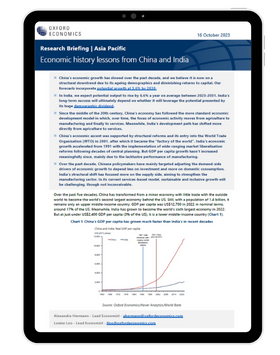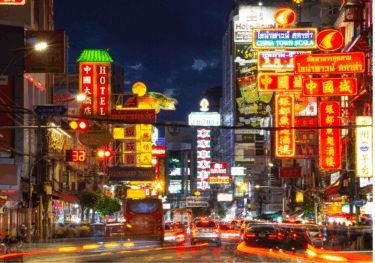Economic history lessons from China and India

China’s economic growth has slowed over the past decade, and we believe it is now on a structural downtrend. In India, the long-term success will ultimately depend on whether it will leverage the potential presented by its huge demographic dividend.
What you will learn:
- Since the middle of the 20th century, China’s economy has followed the more standard economic development model in which, over time, the focus of economic activity moves from agriculture to manufacturing and finally to services. Meanwhile, India’s development path has shifted more directly from agriculture to services.
- China’s economic ascent was supported by structural reforms and its entry into the WTO in 2001, after which it became the “factory of the world”. India’s economic growth accelerated from 1991 with the implementation of wide-ranging market liberalisation reforms following decades of central planning.
- Over the past decade, Chinese policymakers have mainly targeted adjusting the demand-side drivers of economic growth. India’s structural shift has focused more on the supply side, aiming to strengthen the manufacturing sector.
Tags:
Related Posts

Post
Assessing China’s revamped services sector
During the recently concluded three-day Dragon Boat Festival in China, domestic tourism spending reached CNY42.7bn ($5.9bn), with a total of 119mn domestic trips made, rising nearly 6% year-on-year. While per-trip spending dipped, we caution against overinterpreting this single holiday, as travel has become more routine. Broader data points to a shift in Chinese household preferences away from goods and towards services such as tourism.
Find Out More